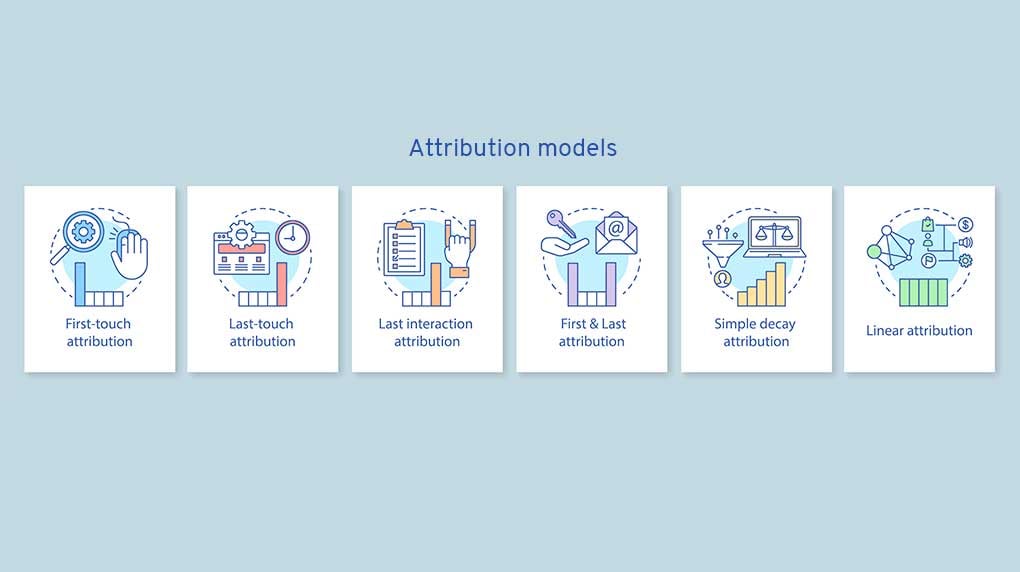
When it comes to PPC ROI, one thing remains constant: data is king.
You only have to look at Major Tom’s past PPC client results to see the real-world impact of data-driven decisions. Kerrisdale Lumber, for example, managed a 133% increase in revenue year-over-year.
However, knowing how to understand and calculate your PPC data can be tough. That’s why we’re breaking down advanced marketing ROI formulas for you. We will cover:
When we say PPC ROI (pay-per-click return on investment), we’re talking about the profitability of a pay-per-click campaign. ROI shouldn’t be confused with ROAS (return on ad spend). ROAS only considers how much you made in revenue compared to how much you spent on ads.
With ROI, you’re accounting for the cost of doing business as well as your investment into the ad campaign. So, you’re also considering the cost of the product or service as well as the advertising budget.
In other words, PPC ROI measures how effectively a company's advertising dollars are being used to drive conversions and ultimately generate revenue.
Now, for the answer to questions like, “What is a good ROI in PPC?” and “How do you calculate ROI for PPC?” be sure to read the guide to decoding PPC metrics next.

As a marketing manager with a PPC campaign, you need to be able to justify your advertising budget and address any challenges to the stakeholder team. That’s on top of managing your media plan with best practices. Some of these justifications and challenges might include the following:
PPC ROI is often complicated by multiple touchpoints in the customer journey. You can use advanced attribution models to allocate credit to different interactions better.
Tracking conversions across a few devices or platforms can get messy. How to calculate ROI from a PPC campaign easily? Incorporate tracking apps and regularly audit your data.
Sometimes, a PPC campaign is a waiting game. Results aren’t always immediate. Align your expectations with the industry standard. Keep in mind that some campaigns will have a longer conversion cycle.
You can’t control everything that will affect your ROI. Market changes, seasonality, and economic conditions can impact your bottom line. Be aware of these variables when looking at your ROI trends over time.
Emphasize the broader value of PPC beyond immediate returns when you report to stakeholders. Brand visibility and audience engagement are adjacent benefits to your campaign.
Invest in A/B testing and experimentation to find winning strategies and continuously improve ROI. Testing allows you to identify what works best for your specific audience and industry.
You can dive into these details further in our in-depth paid media strategy and ROI guide.
You’re going to want to save the following guide on advanced methods for calculating PPC ROI.
There’s more to calculating PPC ROI than meets the eye. We’ll go through:
To calculate PPC ROI accurately, you (of course) need to track revenue generated from your PPC campaigns. This can be achieved by integrating your PPC platform with your CRM or eCommerce system. By matching conversions with revenue data, you can calculate the actual ROI.
Advanced tip: When you track your revenue, be sure to segment by new vs. returning customers so you can see how your customer acquisition vs. retention strategies are panning out.

Calculation: ROI = (revenue - cost)/cost x 100
But revenue is only one piece of the larger picture. To understand where customers are converting and where they’re dropping off, you need to have conversion tracking in place.
Proper conversion tracking is the foundation of accurate PPC ROI measurement. By implementing conversion tracking codes on your website, you can track and attribute conversions to specific PPC campaigns, keywords, and ads.
Any marketer worth their salt should have some form of conversion tracking in their PPC campaign. This brings us to using attribution models for advanced tracking.
Attribution modeling helps you understand the customer journey and the impact of different touchpoints on conversions. By assigning credit to various interactions along the sales funnel, you can attribute ROI accurately to different PPC campaigns and channels.
Advanced attribution tracking models can take your data beyond the last click, too. More advanced approaches include:

If you want to fine-tune your strategies to the whims of your target audience, you need to consider advanced KPIs. Knowing how to calculate PPC ROI in terms of more intangible benefits like brand lift is important when showing success metrics.
Comprehensive KPIs can reveal deep insights into customer segments, engagement, and brand impact. This can help you accurately calculate where your ROI is coming from. It can also give you insight into the knock-on effects your investment has, like your brand perception.
Calculating the lifetime value of customers acquired through PPC campaigns provides deeper insights into long-term ROI. Repeat purchases, upsells, and referrals can all give you a deeper understanding of your PPC investment.
Calculation: LTV = (Average Purchase Value × Average Purchase Frequency)/ Churn Rate
A positive brand lift indicates that your PPC efforts are contributing to improved brand recognition and customer sentiment. A strong brand lift can have a positive impact on PPC ROI as it can lead to increased brand loyalty, trust, and higher conversion rates. Customers are more likely to engage with and convert from ads associated with a trusted brand.
Quality Score is a metric used by platforms like Google Ads to evaluate the relevance and quality of your ads, keywords, and landing pages. It affects ad positioning and cost-per-click (CPC).
A higher Quality Score can lead to better ad positions and lower CPC, potentially improving ROI. It indicates that your ads are more relevant to users, which can result in higher click-through rates and conversions.
[Image of Google’s quality score displayed on a laptop]
Incorporating geographically specific KPIs is crucial if you’re targeting different regions with your PPC campaigns. Regional conversion rates and local engagement metrics help you tailor your campaigns to local behaviors and preferences.
By optimizing your campaigns based on regional data, you can allocate budget and resources more effectively, resulting in better ROI. It ensures that you are targeting the right audience in specific locations, potentially increasing conversion rates and lowering costs.
A/B testing allows you to experiment with different elements of your PPC campaigns, such as ad copy, landing pages, and targeting. By comparing the performance of different variations, you can identify the most effective strategies for maximizing ROI.
Advanced A/B testing tip: Stay data-driven. You’ll need to let your tests run for a significant testing period and gain enough traffic to measure the results. Then, allow your data to guide your decisions. Even if the results surprise you, it’s important to make decisions about future ads based on data.
Segmenting your PPC ROI analysis by standard dimensions, such as demographics, locations, or devices, can reveal valuable insights. It helps you understand which segments are driving the highest ROI and enables you to allocate resources accordingly.
But on top of standard segmentation, consider factors outside of the norm. Using behavior patterns, purchase history, and interactions with previous campaigns can lend valuable insight.
You can advance your segmentation by grouping users by their stage in the buying cycle or by specific interests indicated through their online activity. Then, you can hyper-target relevant ads.
Explore cross-segment analysis to see how individual segments influence each other. Like maybe device usage varies by time of day or time zone.
By analyzing the cost components of your PPC campaigns, such as click-through rate (CTR), cost per click (CPC), and conversion rate, you can identify areas for cost optimization. This allows you to improve ROI by reducing unnecessary expenses.
Calculations:
Looking for more information on boosting ROI? Try these six steps to stellar paid media ROI.
The role of data in maximizing PPC ROI
The importance of data in your decision-making cannot be overstressed. If you don’t base your PPC campaign choices on what the data is telling you, your campaign is only going to succeed through pure luck. And when you’re betting your budget, you don’t want to rely only on luck.

Whether you’re running your PPC campaign in-house or have outsourced to an agency, whoever is involved needs full access to all of the data sources — even ones seemingly disconnected. You never know how one source of data will affect another.
Kerrisdale Lumber is a renowned nationwide building supply and hardware store with a history spanning over a century.
After a strong sales year, Kerrisdale Lumber's momentum waned. They needed to reinvigorate their PPC campaigns to achieve year-over-year revenue growth. To meet this challenge head-on, Kerrisdale turned to Major Tom because of our agency’s expertise in leveraging data for campaign success.
Major Tom’s media team initiated a comprehensive audit of Kerrisdale Lumber's Google Ads account, unearthing a treasure trove of insights hidden within their data. By zeroing in on the top-performing keywords and creatives, the team unearthed the strategies that were already driving results. Then, they harnessed these insights for optimization.
By meticulously optimizing Kerrissdale’s Google Ads account, the Major Tom team left no room for underperforming elements to drain resources. Opportunities for maximum ROI were realized, and Kerrisdale expanded nationwide targeting for efficiency.

We recognized seasonal trends in customer behavior, adjusted budgets accordingly, and ensured ad spend aligned with peak periods. To gain more clicks and conversions, the team also:
The data-driven approach yielded exceptional results:
Kerrisdale Lumber's success is a testament to the power of data in PPC campaign management. It’s also a testament to investing in your own success. When it comes to affordable PPC management, you will make more by investing in a quality agency that can boost your ROI.
Want to read up on more data-driven campaign successes? The Birks Chinese New Year campaign award win sheds valuable insight.
Data is the lifeblood of successful PPC campaigns. It guides decisions, reveals opportunities, and maximizes ROI. To get to the top of your pay-per-click advertising game, take a data-driven approach.
Next up, learn how to achieve a positive ROI with your media campaigns as a whole.
Receive exclusive action-focused content and the latest marketing insights.